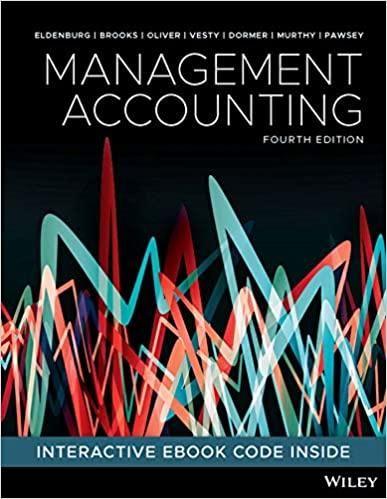Sunshop Books is a multi-divisional book company that listed on the stock exchange about three years ago.
Question:
Sunshop Books is a multi-divisional book company that listed on the stock exchange about three years ago. Like many in the industry, Sunshop started out in the 1980s as a single-site suburban bookstore. Company CEO Lewis Negus has been in the role for three years, having joined the company around the time of its stock exchange listing. It was expected that the listing would provide much needed capital to enable the company to compete in what was becoming a rapidly changing and dynamic environment due to:
• continual merger and acquisition activity
• developments in technology such as e-readers and e-books as well as in the development of digital applications
• the financial difficulties experienced by industry participants particularly in the retail sector.
The company is currently structured around three main divisions as follows.
• Publishing: This division publishes educational textbooks, adult fiction and non-fiction books, and children’s books. Sunshop has a strong reputation for producing educational texts for the school and university markets.
• Retail: This division grew out of the original shop. Sunshop owns a number of specialist bookshops itself; with a focus on developing close links with customers. Of course, the retail shops also served as an outlet for many of the books published by the Publishing division. As well as owning its own shops, Sunshop had also taken an ownership stake in a number of specialist retail bookstore chains.
• Technologies-based division: This division focuses on technological applications and works closely with the Publishing division in particular. This includes developing technological content to support the hardcopy textbooks produced by the Publishing division. For example, a recent project included the development of smart-card technology containing interactive software that enables students to self-test on content in the specific chapters of an auditing text. Each divisional manager is evaluated on the basis of return on investment along with a mix of other measures. Bonuses are paid on the basis of ROI performance alone.
Transfer pricing issues
While senior management valued divisional manager autonomy and decision making, they felt the organisational interests should normally prevail. To this end, the key components of the company’s transfer pricing policy were:
• all transfers would occur at full costs plus a mark-up of 10 per cent
• there would be no sourcing autonomy; transacting internally would be the first priority
• divisions would be permitted to use any spare capacity to meet external demand.
The manager of the Technologies-based division — Carly Taylor — has raised concerns about the policy. Carly is proud of the innovation and creativity that the technological developments the division has been able to generate, particularly in the last two years. This has resulted in an increase in demand for their services from external customers including other book publishers and educational institutions. Carly argues that her divisional ROI would be higher if she had more autonomy to service outside customers. She says ‘full costs plus 10 per cent just does not give us enough of a return . . . we could be earning twice the profit on outside work’.
Required
(a) Evaluate the current transfer pricing system (including consideration of the strengths and limitations).
(b) What changes would you make to help address the limitations you identified? How would these changes be an improvement on the current system?
Step by Step Answer:

Management Accounting
ISBN: 9780730369387
4th Edition
Authors: Leslie G. Eldenburg, Albie Brooks, Judy Oliver, Gillian Vesty, Rodney Dormer, Vijaya Murthy, Nick Pawsey





